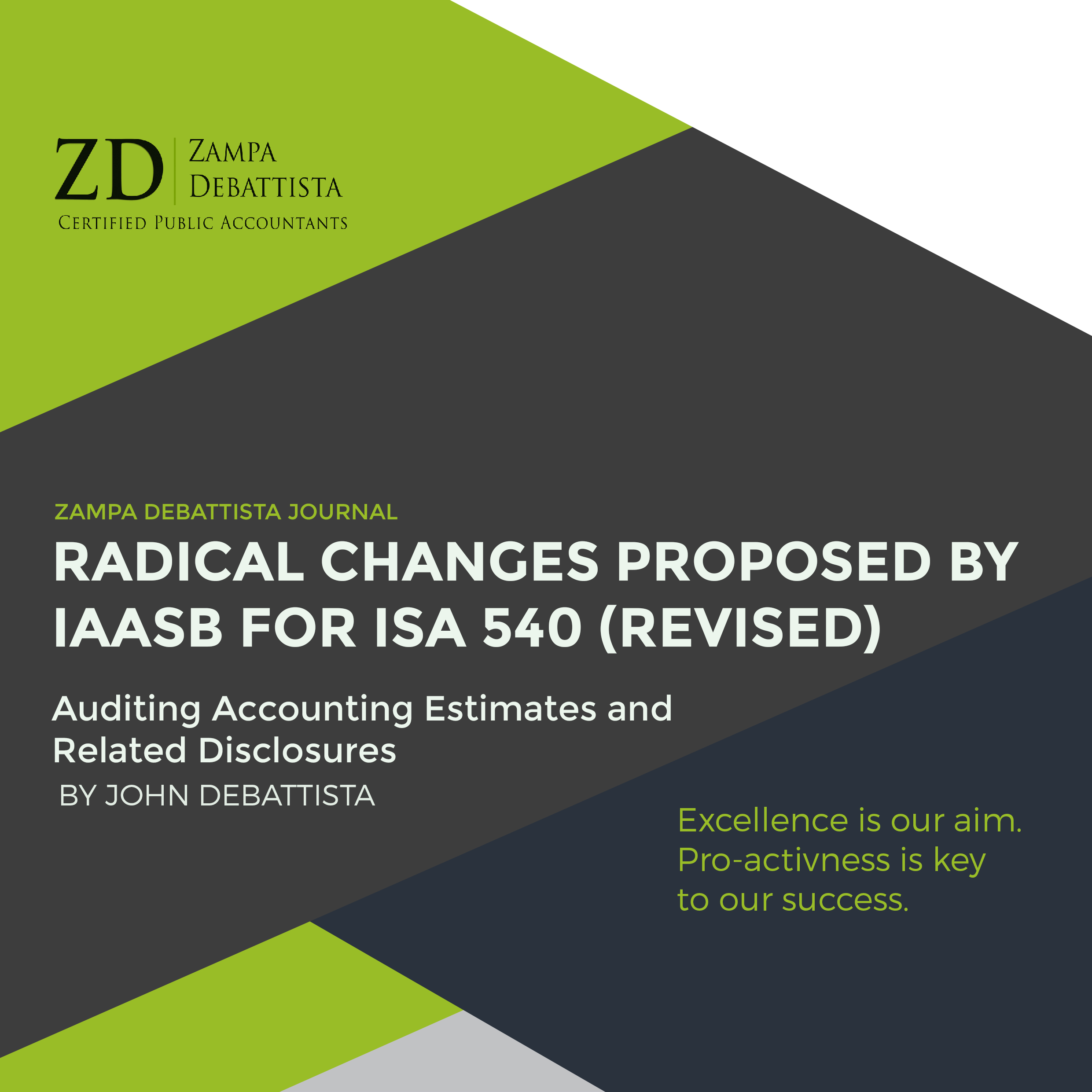1.1 Key pointers
- Overhaul stems from the new ’’expected losses’’ impairment model under IFRS 9;
- Will apply to all audits no matter size or industry;
- Enhances requirements for risk assessment procedures by considering factors such as complexity, judgment, and estimation uncertainty;
- Estimates to be placed into one of two buckets (see below); and
- Sets a more detailed expectation for the auditor’s response to identified risks and use of professional skepticism
1.2 The two buckets
| Assess risk with reference to: | ||
| Complexity | Judgement | Estimation uncertainty |
Bucket 1 – Low inherent risk
Do one or more of the following:
1. Look at subsequent events;
2. Test management processes;
3. Develop own estimate
Bucket 2 – Non – low inherent risk
Design and perform further audit procedures to obtain audit evidence about:
1. Complexity*
2. Judgment by management*
3. Estimation uncertainty*
Low inherent risk
Audit procedures for accounting estimates falling under this bucket remain broadly as they are now.
Non – low inherent risk
A radical approach is being proposed here with more granular requirements over the type of matter the auditor will be expected to obtain sufficient audit evidence; in particular:
Complexity* |
Judgement* |
Estimation Uncertainty* |
| Obtain evidence on: -Method -Data; -Assumptions. |
Are assumptions consistent with each other and with those used in other estimates or with those used in other areas? | What did management do to understand and address estimation uncertainty? |
Comments from Author:
We believe that the spirit of the exposure draft is a step in the right direction. Accounting estimates are an area which pose a great challenge for auditors given that susceptibility to misstatement. The exposure draft tries to address the problematics auditors face when dealing with management bias and potential for fraud given the high level of uncertainty and judgement.
In our opinion the challenges ahead are:
– The auditor may find it hard to decide in which bucket to place the accounting estimate. For example, one would think that depreciation calculations would fall under the low risk bucket but are we sure?
– The implementation of the standard means a radical change in approach. We will be shifting towards management who are required to prove the auditors what they have done and why they have done it and not vice-versa. This shift may be difficult especially for SMEs.
– One may interpret that through this standard the message that the IAASB is sending is that estimates can be audited in a precise manner. This is not the case.
Update by IAASB:
December 2017
The IAASB discussed key issues raised by respondents in relation to the Exposure Draft of ISA 540 (Revised), Auditing Accounting Estimates and Related Disclosures’, including the scalability of the ISA, the use of the term “reasonable,” the exercise of professional skepticism and the Task Force’s approach to the application material. The IAASB also discussed the Task Force’s revisions to requirements and application material based on comments received on the Exposure Draft. The IAASB asked the Task Force to focus on redrafting the application material according to the planned approach with a view to conducting a first read of ISA 540 (Revised) in March 2018, ahead of a targeted approval in June 2018.
About us:
Zampa Debattista is a boutique accounting and assurance firm primarily focused on international business. Its main areas of specialization are VAT, Audit and Assurance, and Financial Reporting. Zampa Debattista is in a position to offer its clients quality professional services whilst at the same time retaining a high level of partner involvement.
Should you require any further information please contact: John Debattista on jd@zampadebattista.com
Download:
Zampa-Debattista-Articles-Radical-ChangesZampa-Debattista-Articles-Radical_Changes



